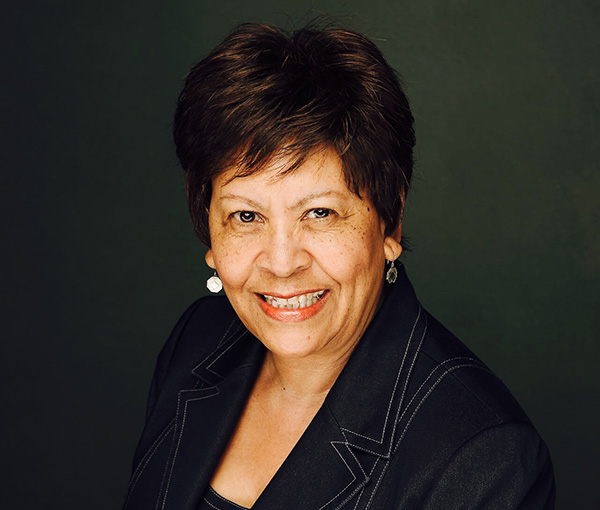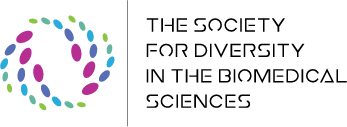800-464-7003 info@biomedicalsociety.org
We believe in Connecting Dreams to Knowledge
From the President
Throughout my career in academia and as a healthcare professional I've met numerous students who want to be physicians and scientists; and graduates, post-docs, and faculty who want to become NIH-R01 researchers and deans. Becoming a biomedical scientist requires more than a dream; one needs to be deliberate, disciplined and determined. Knowledge about the processes and procedures for applications; developing skills in teamwork; understanding the culture, the sacrifices in time, and a commitment to excellence, are all factors that define success. SDBS helps individuals connect their dreams to knowledge; and connects them to a network of institutions, agencies, and industries, ready and willing to support their goals in biomedical science. SDBS will facilitate education and training, partnerships and teams, and professional development activities to integrate learning and develop research that fosters diversity in the biomedical sciences. Join us today to convert dreams into success.
- Cynthia Warrick, PhD RPh

Cynthia Warrick, PhD RPh
Our Mission
The Society for Diversity in the Biomedical Sciences (SDBS) is a national 501(c)(3) non-profit organization focused on substantially increasing the representation of African Americans, American Indians, and Latinos in the sciences related to health and the environment. To carry out its mission, SDBS will provide education, training, and professional development, to grow the biomedical science pipeline.
Members of SDBS are welcomed from the traditional health professions (medicine, dentistry, pharmacy, and nursing), and the following disciplines:
Biomedical Sciences Disciplines
-
Biochemistry
-
Bioinformatics
-
Biological Sciences
-
Biomedical Engineering
-
Biophysics
-
Biostatistics
-
Biotechnology
-
Cell Biology
-
Chemistry
-
Computational / Data Science
-
Embryology
-
Endocrinology
-
Environmental Sciences
-
Epidemiology
-
Genetics
-
Genomics
-
Immunology
-
Microbiology
-
Molecular Biology
-
Nanotechnology
-
Neurosciences
-
Nutritional Science
-
Parasitology
-
Pharmacology
-
Pharmaceutical Sciences
-
Physiology
-
Toxicology
-
Veterinary Medicine
Biomedical scientists have careers in higher education; research universities and laboratories; local, state, and federal agencies; hospitals and medical centers; policy centers and think tanks; and in the pharmaceutical and biotechnology industries.
Why Diversity in Biomedical Science?
Changing demographics in the United States warrant an emphasis in the promotion and recruitment of African Americans, American Indians and Hispanics into the biomedical sciences. The National Institutes of Health Strategic Plan (2016-2020) provides a framework to “Advance Opportunities in Biomedical Research,” in which enhancing diversity is a major tenet.
According to the US Census Bureau’s March 2015 report, by 2044, more than half of all Americans will belong to a minority group. By 2060, African Americans are projected to increase from a current 14.3% to 17.9%, a change of 63.6%; and Hispanic Americans are projected to increase from 17.4% to 28.6%; a 114.8% change. Americans with two or more races will triple in size, increasing by 226%.
Moreover, the US Bureau of Labor Statistics (BLS) reports that healthcare occupations and industries are expected to have the fastest employment growth between now and 2024, increasing from 12% to 13.6%, becoming the largest employing sector in the decade.
However, diversity in the health sciences remains a major challenge. According to "Labor Force Characteristics by Race and Ethnicity, 2014," the US BLS reported that of the approximately 143,000 people employed as "medical scientists” in the US, 58.2% were White, 33.8% were Asian, 7.9% were Hispanic, and 5.1% were African American.
More diversity initiatives are needed to address health sciences demands and US demographic changes.
A 2015 Special Report produced by US News & World Report stated, “Despite a national focus on directing more students into STEM…the workforce is no more diverse now than in 2001.” Data from the National Science Foundation 2015 report, Women, Minorities, and Persons with Disabilities in Science and Engineering, document the disparities in the science and engineering (S&E) workforce: 71% of S&E jobs are held by whites, 17% Asian, 6% Latino, 5% African American, and 2% other.
A breakdown of these data show that the S&E sectors that employ the most African Americans are Social Work (19.9%), Counselors (12.8%), Human Resources (11.4%), and Computer system analysts (11.1%); and fewer than 3% are Life scientists and only 4.4% are diagnosing health practitioners. Hispanics in S&E jobs are more likely to be Petroleum Engineers (15.8%) and Counselors (13.9%).
According to Diversity in the Physician Workforce: Facts & Figures 2014, produced by the Association of American Medical Colleges, out of the total US MD active physicians, 4.1% were African American, 4.4% Latino, 0.4% American Indian or Alaskan native, 11.7% Asian, and 48.9% White. With the implementation of the Affordable Care Act, increasing healthcare access to more Americans, requires increased diverse and culturally responsive healthcare providers.
Factors contributing to the low numbers of underrepresented scientists:
Poor or no access to effective Teachers, role models and mentors
Lower high school completion rates
Underachievement in basic skills (reading, math, critical thinking) and lower scores on standardized tests
Poor college retention and graduation rates
Poor access and exposure to advanced courses in K-12, not college ready
Lack of knowledge and little exposure to STEM career fields
Lack of support from family and local community
Low expectations, lack of rigor in education
Fear of student loan debt
Work and resource demands are higher priority
Expand your CONNECTIONS
SDBS facilitates education & training, partnerships & teams, and professional development for advancement in the biomedical sciences.
Copyright © 2024 Society for Diversity in the Biomedical Sciences (SDBS)
Developed by Blue Atlas
